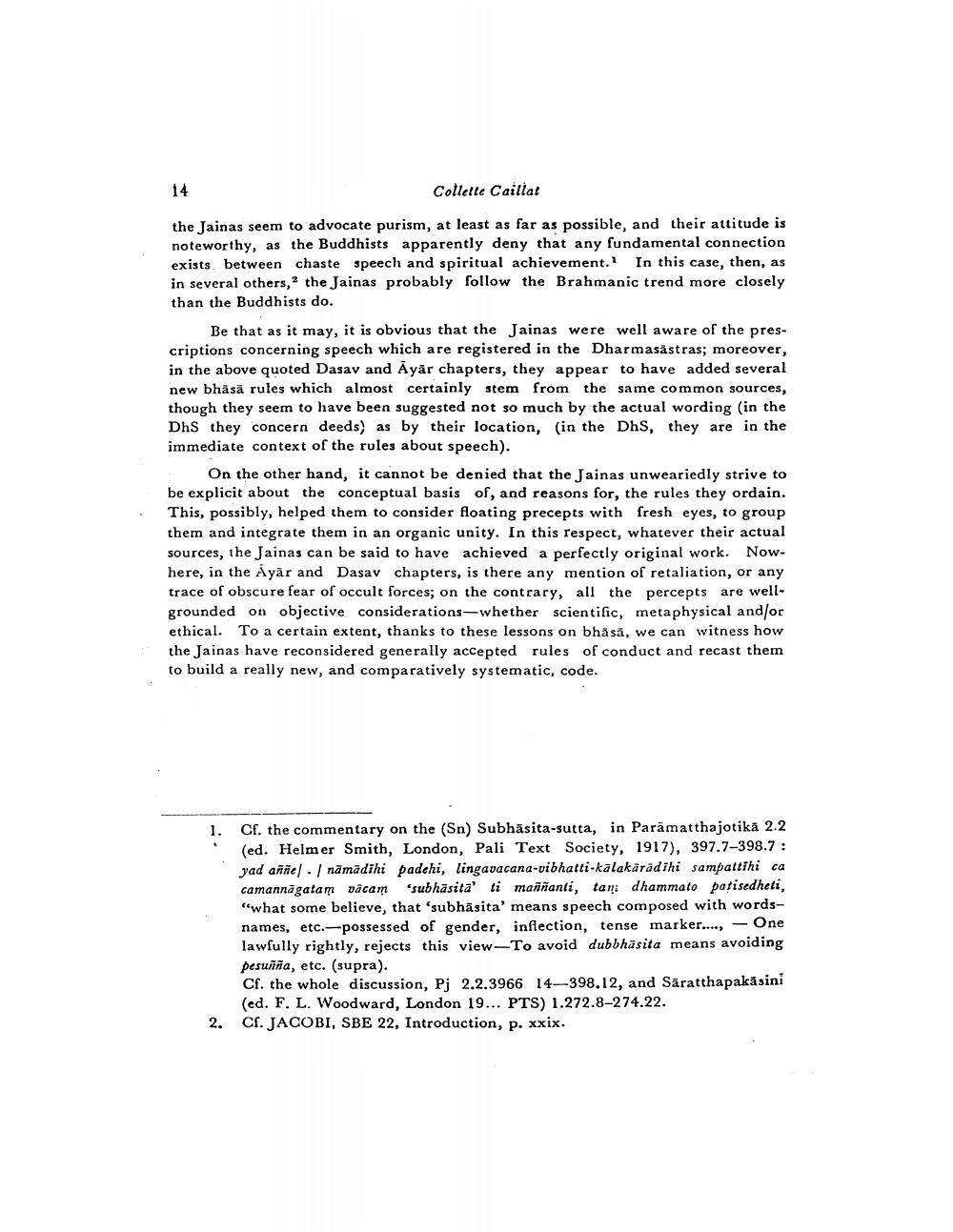________________
14
Collette Caillat
the Jainas seem to advocate purism, at least as far as possible, and their attitude is noteworthy, as the Buddhists apparently deny that any fundamental connection exists between chaste speech and spiritual achievement. In this case, then, as in several others, the Jainas probably follow the Brahmanic trend more closely than the Buddhists do.
Be that as it may, it is obvious that the Jainas were well aware of the prescriptions concerning speech which are registered in the Dharmasastras; moreover, in the above quoted Dasav and Ayar chapters, they appear to have added several new bhāsā rules which almost certainly stem from the same common sources, though they seem to have been suggested not so much by the actual wording (in the DhS they concern deeds) as by their location, (in the DhS, they are in the immediate context of the rules about speech).
On the other hand, it cannot be denied that the Jainas unweariedly strive to be explicit about the conceptual basis of, and reasons for, the rules they ordain. This, possibly, helped them to consider floating precepts with fresh eyes, to group them and integrate them in an organic unity. In this respect, whatever their actual sources, the Jainas can be said to have achieved a perfectly original work. Nowhere, in the Ayar and Dasav chapters, is there any mention of retaliation, or any trace of obscure fear of occult forces; on the contrary, all the percepts are wellgrounded on objective considerations-whether scientific, metaphysical and/or ethical. To a certain extent, thanks to these lessons on bhäsä, we can witness how the Jainas have reconsidered generally accepted rules of conduct and recast them to build a really new, and comparatively systematic, code.
Cf. the commentary on the (Sn) Subhasita-sutta, in Parämatthajotikā 2.2 (ed. Helmer Smith, London, Pali Text Society, 1917), 397.7-398.7: yad aññenāmādīhi padehi, lingavacana-vibhatti-kalakärädihi sampattihi ca camannāgatam vacam subhasita' ti maññanti, tam dhammato patisedheti, "what some believe, that 'subhäsita' means speech composed with wordsnames, etc.-possessed of gender, inflection, tense marker...., One lawfully rightly, rejects this view-To avoid dubbhasita means avoiding pesuñña, etc. (supra).
Cf. the whole discussion, Pj 2.2.3966 14-398.12, and Saratthapakasini (ed. F. L. Woodward, London 19... PTS) 1.272.8-274.22.
2. Cf. JACOBI, SBE 22, Introduction, p. xxix.
1.




